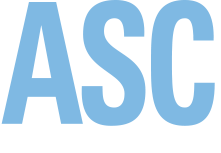UW Sea Grant Supports Walleye for Sustainable Food Fish Production
Through the University of Wisconsin-Stevens Point Northern Aquaculture Demonstration Facility (UWSP NADF), Sea Grant has funded two research projects to intensively raise both walleye and saugeye (hybrid walleye) sustainably as food fish.
Walleye is a species with substantial aquaculture potential because of its high market value and limited supply from traditional commercial sources. Although walleye are one of the most valued food fish species in Wisconsin, most are imported from Canada and caught from wild sources. The saugeye is a naturally occurring cross between a female walleye and a male sauger that has nearly identical properties to the walleye as a food fish. Previous studies have shown that saugeye may exhibit a hybrid vigor, growing more quickly than their walleye cousin. Raising walleye and saugeye on commercial feed in land-based, closed containment systems such as recirculating aquaculture systems or aquaponics enables optimum growth with increased biosecurity. These systems also have limited impact on the environment and wild fish populations.
Because walleye are piscivorous (fish eaters) and highly carnivorous, there are specific techniques, management and equipment required to train these fish to consume commercial fish feed from hatch. UWSP NADF is currently the leading facility in investigating the commercial production of intensively reared walleye and saugeye. Over the past seven years, UWSP NADF has experienced substantial success in raising this species on formulated feeds using specific culture and management techniques.
“Walleye and saugeye have several attributes which make them a good candidate fish species for Wisconsin and the Midwest fish food market,” states Greg Fischer, UWSP NADF facilities operation manager. “We are able to rear them intensively on commercially available feed from the larval stage, they exhibit good performance and growth with our indoor recirculating systems reaching market size in 12-14 months, and they demand a high market value and already have a large market acceptance in Wisconsin,” he adds.
There remains a limited number of bottlenecks for commercial walleye and saugeye industry production in Wisconsin. More research is needed on growth and survival rates of fry, commercial grow-out data and economic studies. With support from Sea Grant, UWSP NADF is working to resolve these issues.
Investigating Micro-diets
Investigating Optimum Grow-out Rearing Density and Nutrient Recycling in Water Reuse Systems
While a variety of species have been researched and reared in traditional recirculating aquaculture systems, or RAS, tilapia is the only species for which production methods have been optimized in aquaponics systems. Preliminary research performed at the UWSP Aquaponics Innovation Center (UWSP AIC) has shown walleye to be a good candidate for aquaponics systems – the rearing temperature of walleye compares well with the optimum temperature for most plants raised in aquaponics, such as lettuce.
Although UWSP NADF and UWSP AIC have raised walleye in both RAS and aquaponics systems, further research is needed to optimize the biological and economical parameters to successfully raise this species in commercial production systems.
To address these needs, Sea Grant has funded the investigation of raising both walleye and saugeye at various grow-out densities while conducting key commercial production evaluations in RAS and aquaponics systems. This research is also comparing water quality dynamics between both systems. The outcomes gathered will be used to develop biological and economic models for producers to evaluate the introduction of a new fish type into their traditional RAS and aquaponic production systems.



